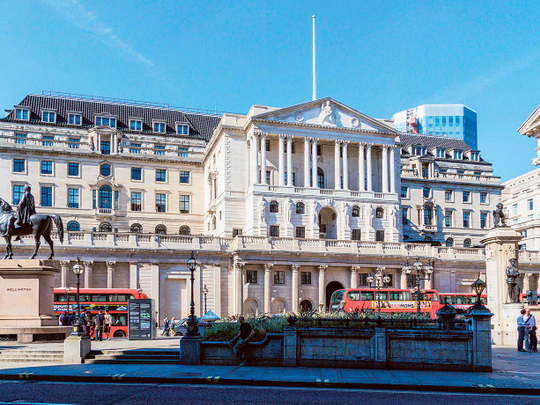
London: Britain sold a government bond with a negative yield for the first time on Wednesday, meaning the state is effectively being rewarded to borrow as investors agree to be repaid slightly less than they lent.
Britain joins Japan, Germany and some other European countries in selling government debt with a negative yield, reflecting the prospect of a severe global recession caused by the coronavirus and bond-buying by central banks to mitigate it.
Yields for two-year benchmark gilts, which are sensitive to Bank of England interest rate expectations, sank to a record low -0.051% last week. Financial markets see a strong chance that the benchmark rate could dip below zero later this year.
The BoE cut its main interest rate to a record-low 0.1% in March and began buying 200 billion pounds ($245 billion) of assets, mostly gilts, to help the economy by capping a spike in yields seen at the start of the coronavirus crisis.
Appetite for British debt has been strong since then, a relief for the government which is on course to borrow hundreds of billions of pounds this year due to the coronavirus.
Several BoE policymakers have said they might consider cutting rates below zero, an option which had been resisted by former governor Mark Carney.
Wednesday’s auction saw a gilt maturing in July 2023 sell at an average yield of -0.003%.
While investors will receive annual interest of 0.75%, they paid above face value for the bond so the actual return in cash terms is less than they have lent.
Demand for the bond was low by recent standards. Investors bid for just over twice the 3.75 billion pounds on offer, the weakest since just before the BoE cut rates.












